Leptasterias coei Verrill, 1914 (tentative)Common name(s): Six-armed star |
|
| Synonyms: |  |
|
Phylum Echinodermata
Order Forcipulatida
Family Asteriidae
|
|
| An unknown seastar of the Leptasterias hexactis complex, tentatively identified as L. coei. Ray length 4 cm (to center). Found in the lower rocky intertidal at Sares Head July 2015. | |
| (Photo by: Dave Cowles July 2015 ) | |
Description: As with other Leptasterias, this seastar is only moderate in size and has 6 rays. The ray to disk ratio in this individual is 4. The aboral surface is covered with blunt spines and with pedicellariae. This species is part of the Leptasterias hexactis complex which exists here in the Pacific Northwest. See 'How to Distinguish from Similar Species' below for why I have identified it as something other than L. hexactis and given it a tentative identification as L. coei.
Note that this is only a tentative species identification. If it is indeed L. coei it is far out of its reported range and was found on a different substrate (rocky intertidal), although subtidal soft bottoms were within a few hundred meters.
How to Distinguish from Similar Species: This species differs from Leptasterias hexactis in the following ways: Color: A purplish or rusty red rather than grayish blue-green. Aboral surface: Aboral spines well-spaced, cylindrical, and blunt, surrounded by circles of pedicellariae (photo, photo, photo) (Lambert, 2000 says they are crossed pedicellariae in L. coei but I couldn't tell for sure in this specimen). There is no carinal row of spines along the aboral surface of the rays (photo). Oral surface: Some of the adambulacral plates have one spine, while others have two (photo, photo). Some of the adambulacral spines also have pedicellariae attached to their sides (photo).
Geographical Range: Kodiak Island to Juneau, Alaska
Depth Range: 18-187 m (but this individual was intertidal)
Habitat: Mud or sand (but this individual was in an intertidal boulder field)
Biology/Natural History:
Virtually
nothing is known about this species
The species is not in a key for this area. Most of my
information
here is taken from Lambert,
2000.
| Return to: | |||
| Main Page | Alphabetic Index | Systematic Index | Glossary |
References:
Dichotomous Keys:none?
General References:
Lambert,
2000
Scientific Articles:
Fisher, W.K.,1930. Asteroidea of the North Pacific
and
adjacent waters. Part 2. Forcipulatida (part).
Smithsonian
Museum, U.S. National Museum, Washington, D.C.
Verrill, A.E., 1914. Harrington Alaska Series, Vol. 14. Monograph of the shallow-water starfishes of the North Pacific coast from the Arctic Ocean to California. Smithsonian Institution, New York.
Web sites:
General Notes and Observations: Locations, abundances, unusual behaviors:
We found this species in the lower rocky intertidal at Sares Head in summer 2015. 2015 is one year after a major die-off of seastars, including some of the Leptasterias complex, occurred here. In the summer of 2015 I found quite a few L. hexactis on the rocks (though less than before), plus a few very odd individuals like this one.
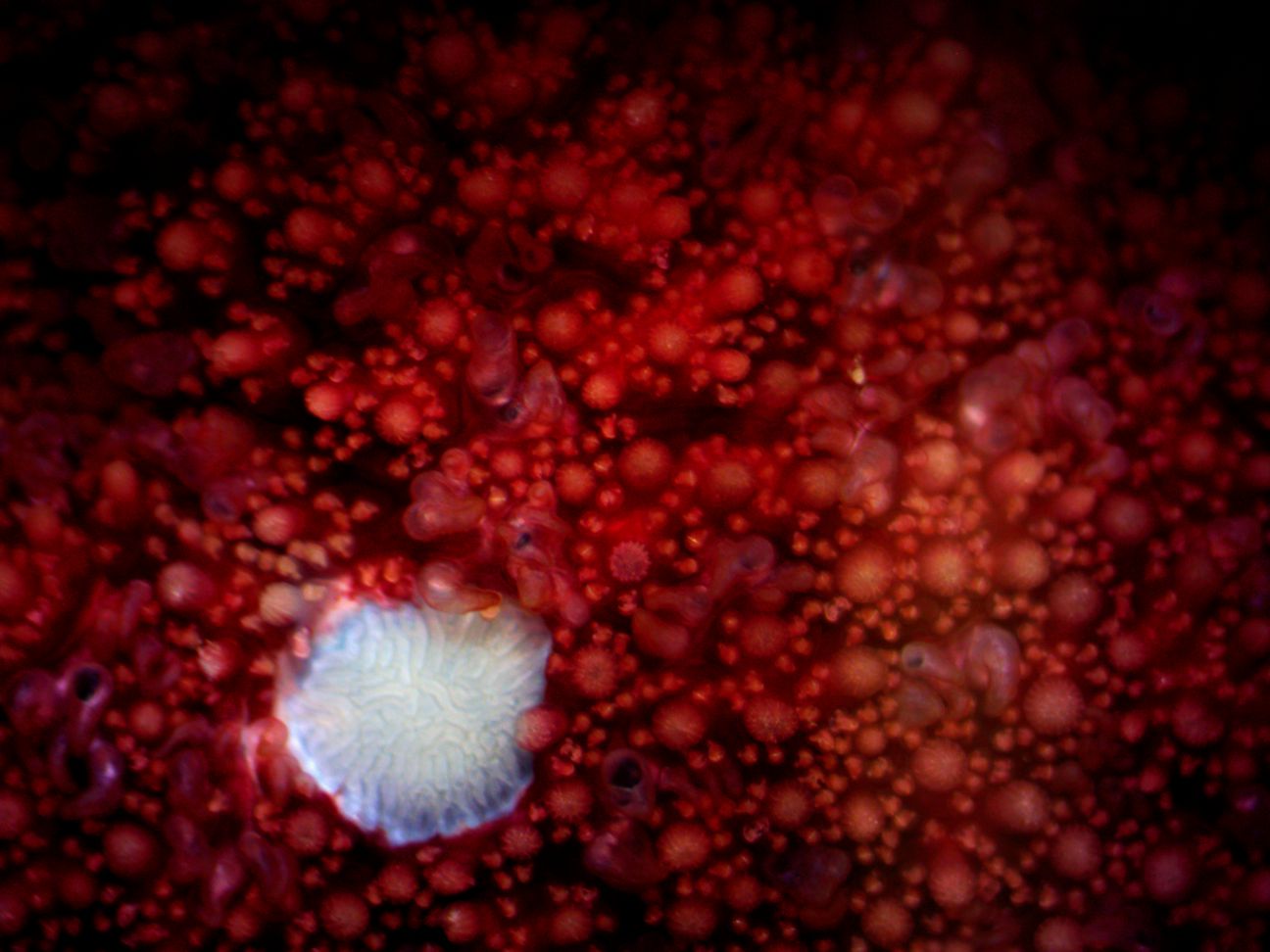
A view of the madreporite
and the aboral
surface
of the central
disk
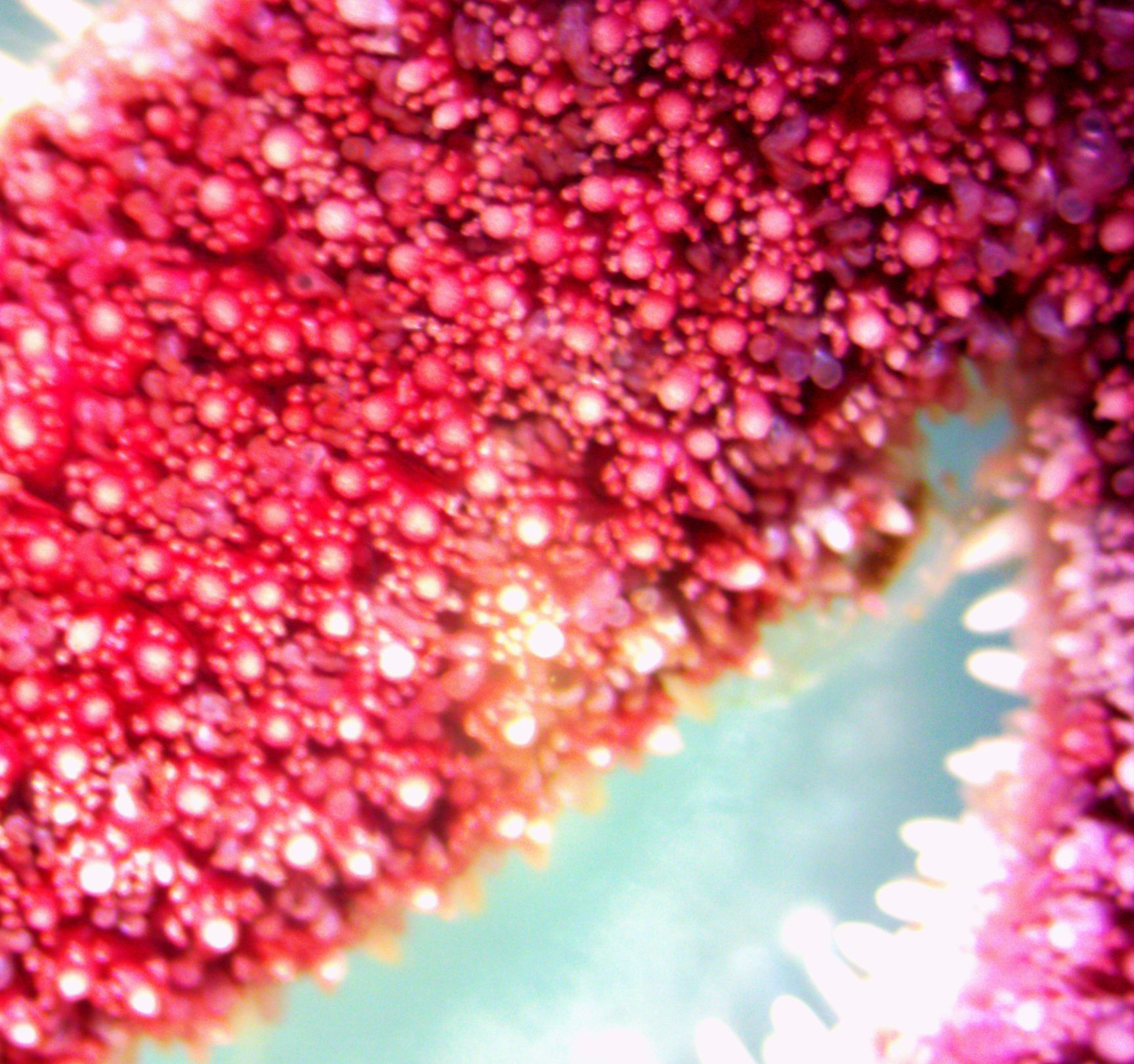
A view of the aboral
surface of the ray.
Spines are blunt and cylindrical, surrounded by abundant pedicellariae.
There is no carinal ridge down the mid-aboral
part of the ray.
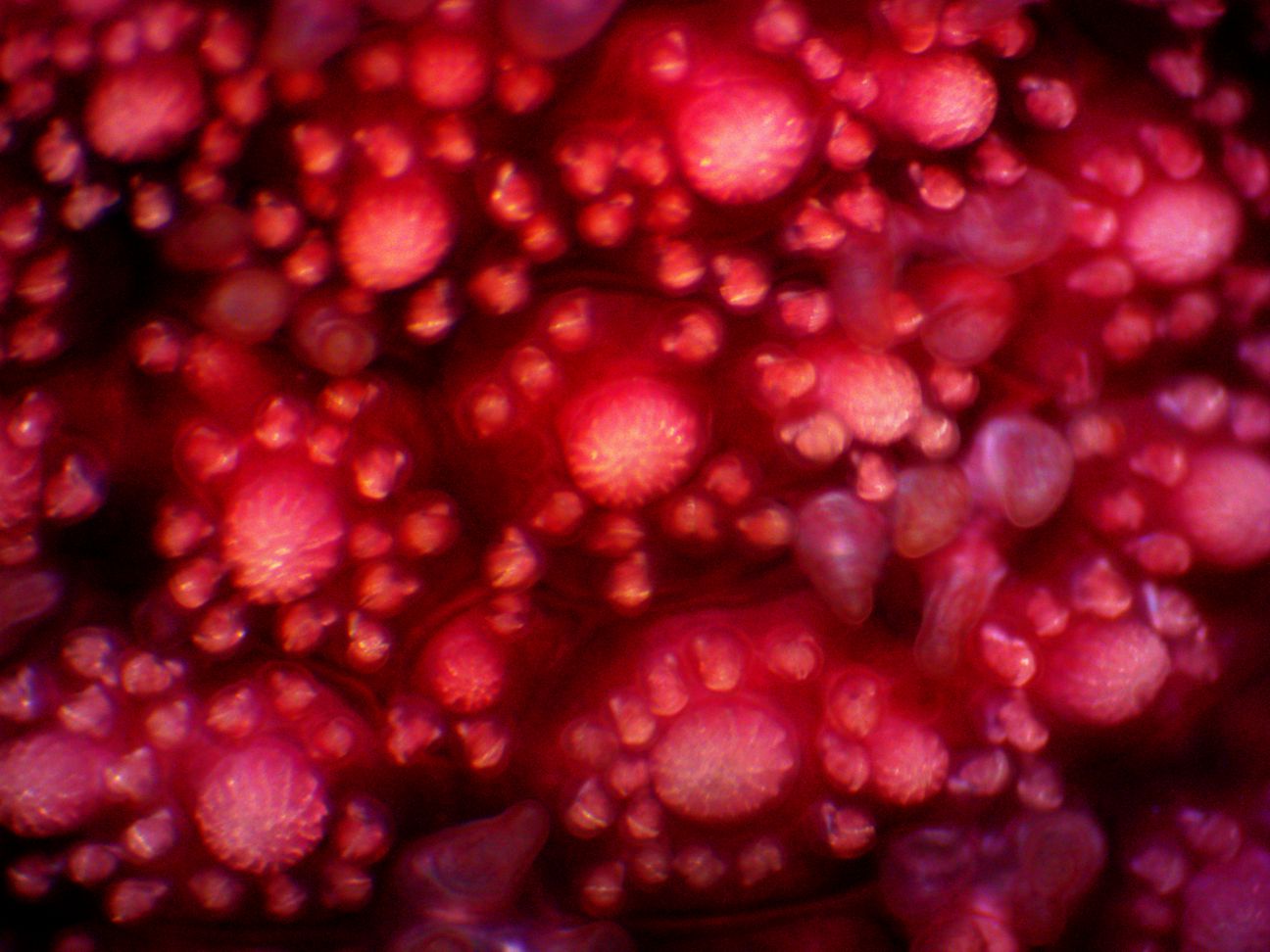
This closeup shows more detail of the aboral
ossicles on the ray.
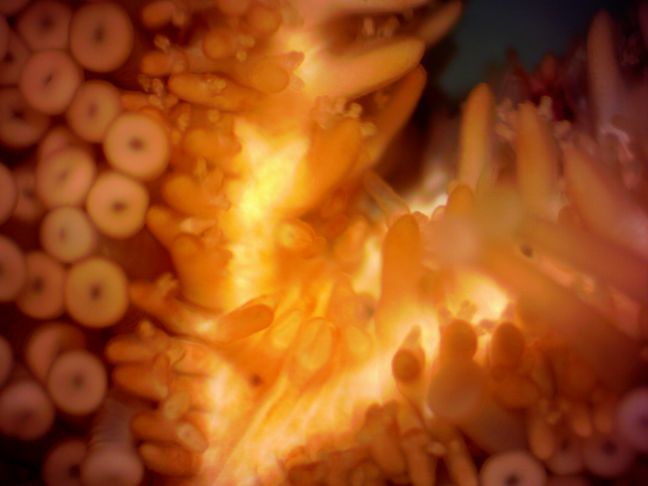
The adambulacral
spines have pedicellariae
protruding from the sides.
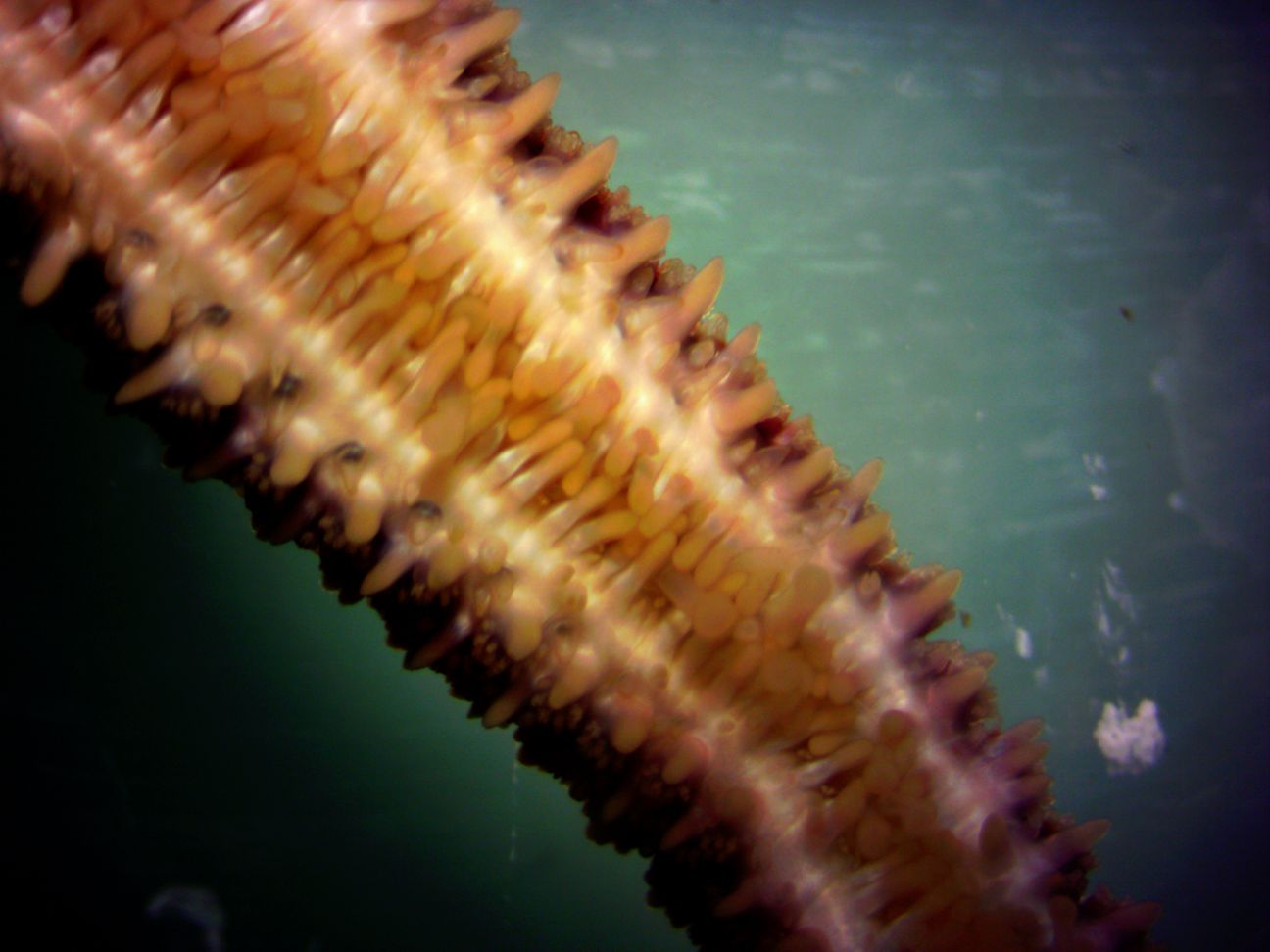
Some of the adambulacral
plates have two spines and some have only one.
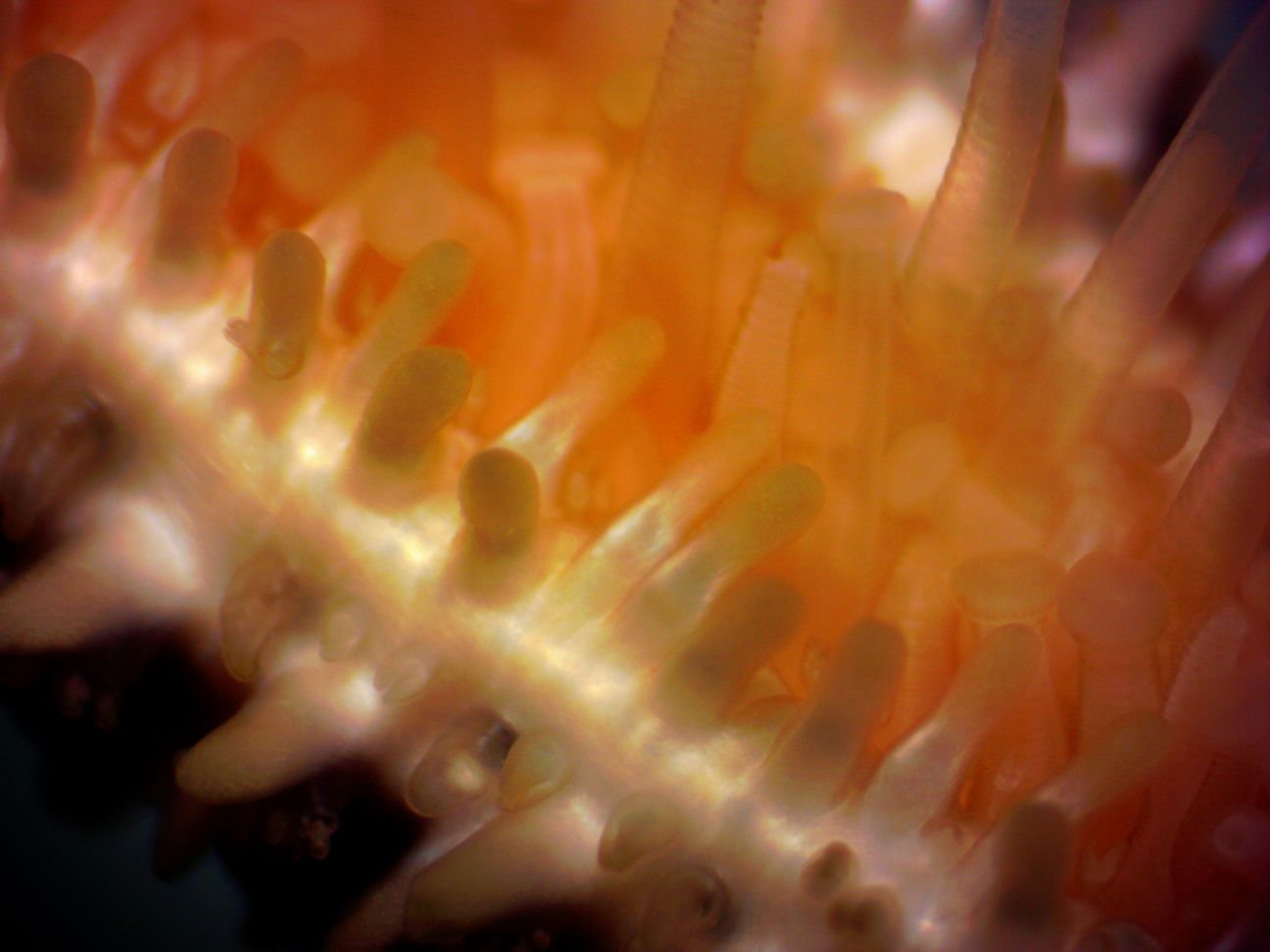
A closeup of the adambulacral
plates
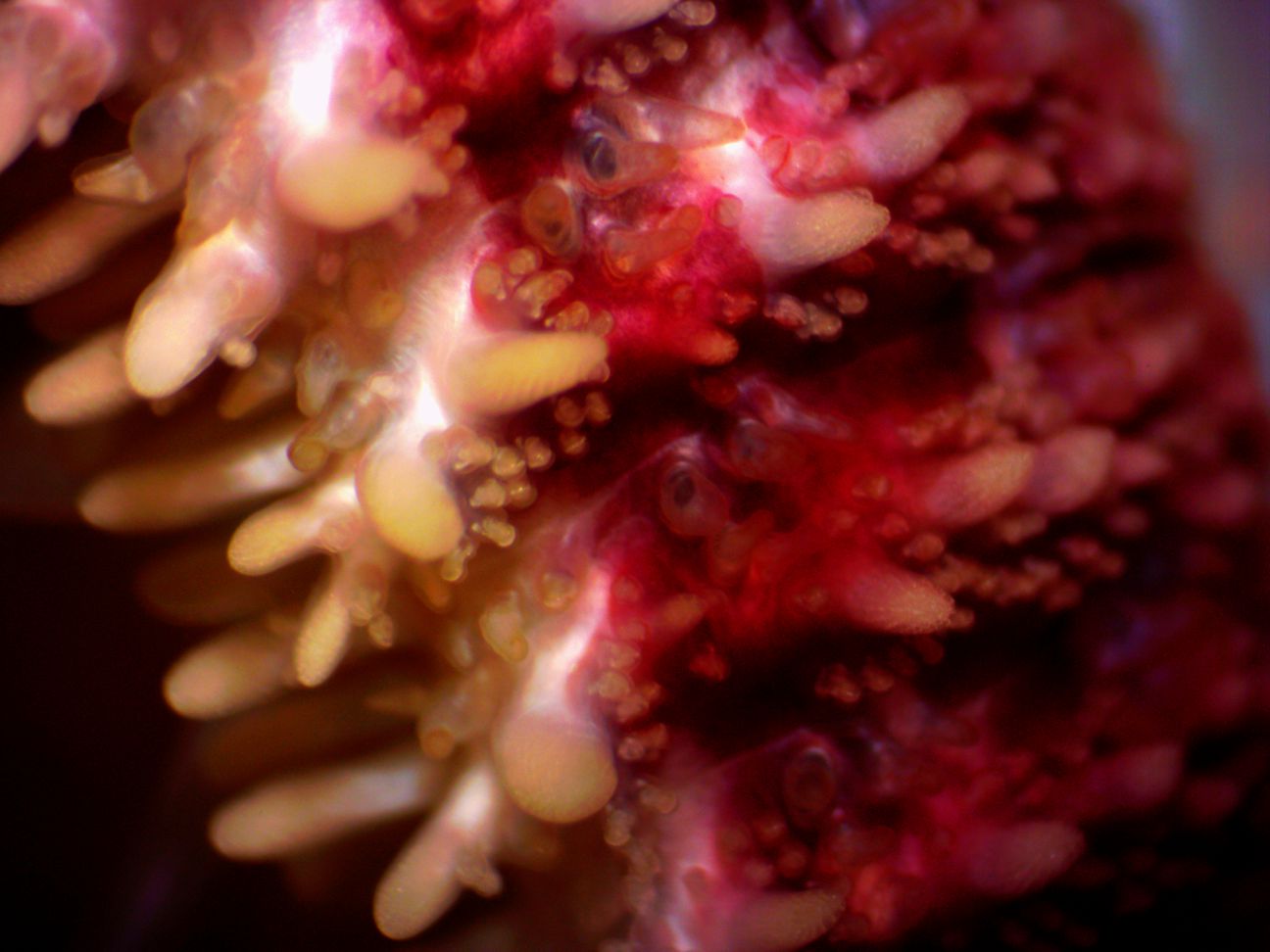
A view of the side plates on a ray.
The oral
side is to
the left.

Another view of the side of a ray.
In this view, the seastar is humped up with all its rays
clumped together in the oral direction.
Authors and Editors of
Page:
Dave Cowles (2015): Created original page
CSS coding for page developed by Jonathan Cowles (2007)
Salish Sea Invertebrates web site provided courtesy of Walla
Walla University